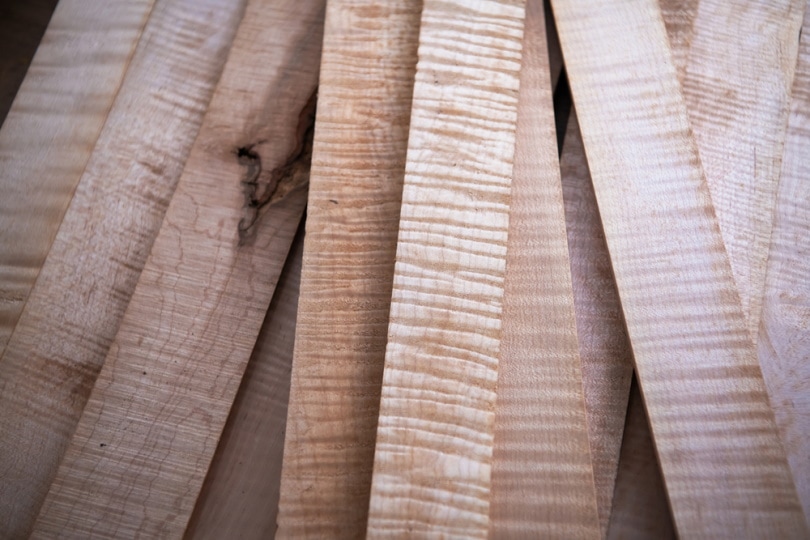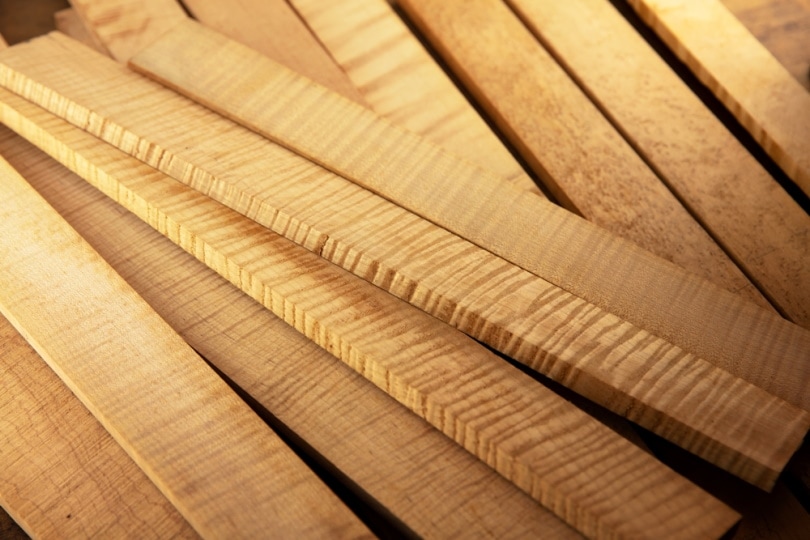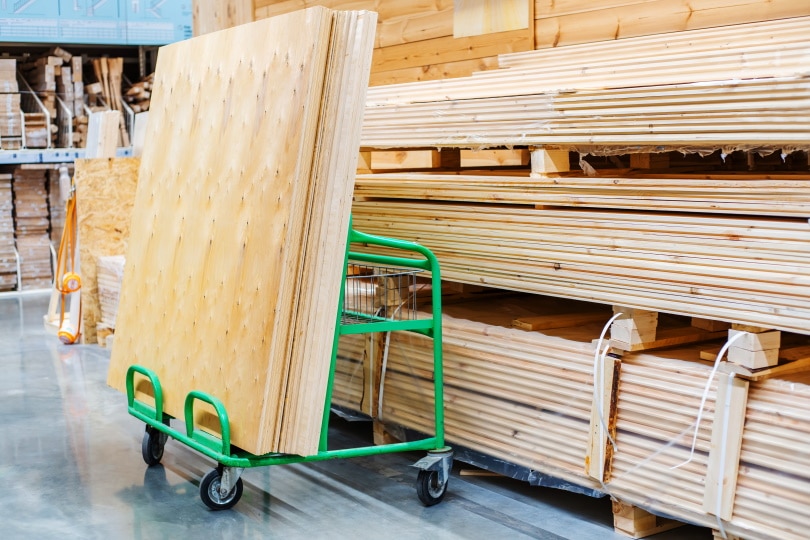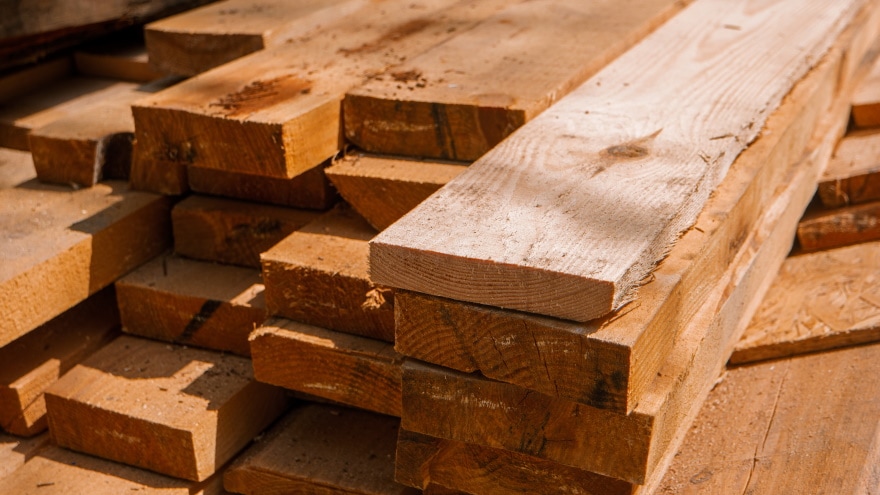What Is Curly Maple Wood? Properties, Characteristics & Uses
-
Codee Chessher
- Last updated:

Maple is an enduring favorite of woodworkers everywhere, with gorgeous pale colors and a huge variety of patterns. “Curly maple” is a somewhat misunderstood term, implying a species of maple when it’s actually a type of whirly grain pattern. Less than 5% of maple trees have figures suitable to be called curly maple.
Curly maple is a grain variation of maple heartwood, and it’s prized by musical instrument makers as one of the best woods for instruments like violins and guitars. Popular nicknames for curly maple include flame, striped, and tiger maple.

Curly Maple Properties & Characteristics
The defining characteristic of curly maple is its unique grain pattern that seems to create an illusion of the grain curling along the length of the board. This unique effect is created by irregular growth of fiber cells within maple heartwood, which can be encouraged in certain ways to grow more figured maple wood.
Like most of nature, there isn’t just one type of curly maple. A more subdued curly design can be cheaply created with certain woodworking techniques, while more exotic, striking patterns rival exotic imported woods in price. Tightly curled maple is the most sought after, used to create flooring, musical instruments, and more.
With a recent resurgence in woodworking interest, misconceptions have formed about curly maple. Some people believe quilted maple falls under curly maple, but they’re really distinct things. If you’re looking for curly maple, it’s better to describe what type of pattern you’re looking for so the supplier can find something more specific that suits your needs.
You can estimate the value of curly maple based on three factors: how tight the curling design is, color, and the difference in appearance between the curl and the surrounding wood. Most popular designs have bright, uniform curling designs along the grain.
Hard curly maple and soft curly maple have different uses, too. Hard maple is more commonly used by luthiers and other instrument makers, while soft maple is better for veneer, furniture, and decorative objects.

Curly Maple Uses
Curly maple can be used in virtually any way that regular maple is used, but typically you’d use it to achieve a certain visual flair regular maple just doesn’t have. Let’s take a look at some ways you can use both hard and soft curly maple.
- Veneer
- Plywood
- Crates and pallets
- Decorative boxes
- Carvings
- Small specialty wood items

- Flooring
- Stairs
- Cabinets
- Paneling
- Worktops
- Tabletops
- Wood toys
What Causes Curly Maple?
Curly maple can form on any maple tree when its branches form a distinct “Y” shape in a compressed space. At the Y-joint, the rings within the branches are compressed, forming the signature curly maple look. Curly maple can also be found in the trunk near the roots.
Much like genes determine our appearance, they can influence grain patterns. Maple trees with curly wood tend to grow together for this reason, which makes harvesting them easier for commercial harvest and processing.


Conclusion
Curly maple is one of the unique patterns maple wood can grow, and it’s widely used to make a huge variety of household items like flooring, musical instruments, and much more. This unique wood could be just the thing you need to spice up the wood in your life.
Featured Image Credit: optimarc, Shutterstock
Contents
